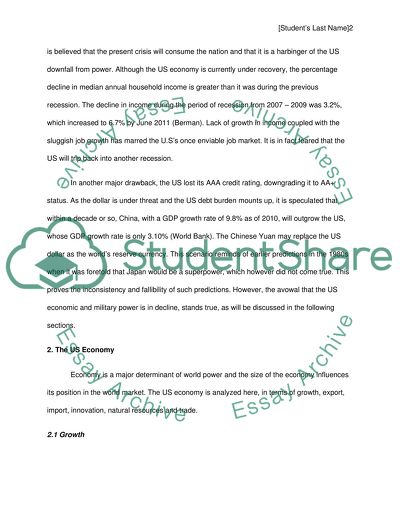Cite this document
(“United States - A superpower in decline Term Paper”, n.d.)
Retrieved de https://studentshare.org/history/1392193-is-united-states-in-decline
Retrieved de https://studentshare.org/history/1392193-is-united-states-in-decline
(United States - A Superpower in Decline Term Paper)
https://studentshare.org/history/1392193-is-united-states-in-decline.
https://studentshare.org/history/1392193-is-united-states-in-decline.
“United States - A Superpower in Decline Term Paper”, n.d. https://studentshare.org/history/1392193-is-united-states-in-decline.


